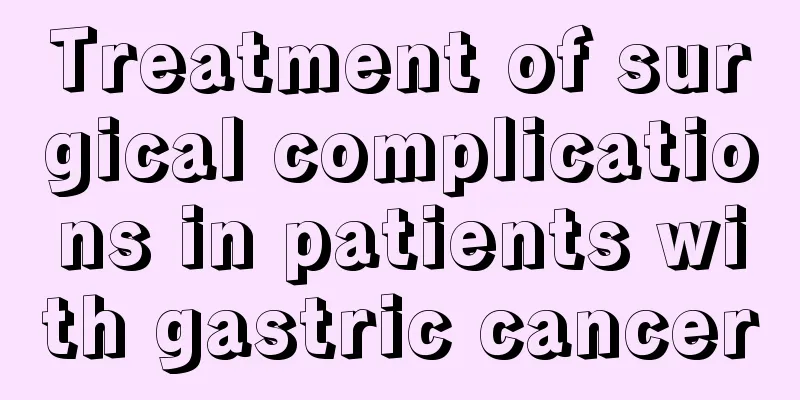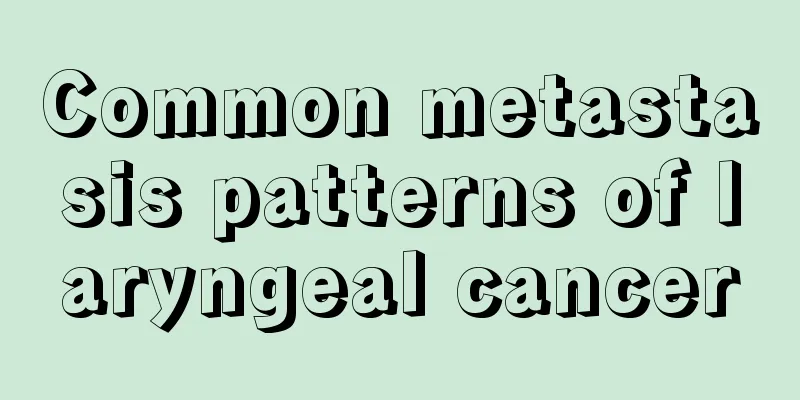Treatment of surgical complications in patients with gastric cancer

|
The management of surgical complications in patients with gastric cancer is as follows: 1. Postoperative gastric bleeding Within 24 hours after radical subtotal gastrectomy, a small amount of dark red or brown gastric juice is drawn from the gastric tube, generally not exceeding 300 ml, and then gradually decreases until it stops on its own. This is a normal phenomenon. If fresh blood is continuously sucked out from the gastric tube after surgery, especially if bleeding continues after 24 hours, it can be defined as postoperative gastric bleeding. The cause of bleeding is mostly anastomotic bleeding or duodenal stump bleeding. Treatment: Non-surgical treatment is usually used to stop bleeding. If non-surgical treatment fails to stop bleeding or the amount of bleeding is greater than 500 ml/h, surgical hemostasis or selective angiography should be performed, vasoconstrictors should be injected, or related arteries should be embolized to stop bleeding. 2. Rupture of the duodenal stump Causes of duodenal stump rupture: ① Anemia and poor physical condition of gastric cancer patients make it difficult for the duodenal stump to heal; ② Obstruction of the gastrojejunal anastomosis causes increased pressure in the duodenum, which can cause stump rupture. Duodenal stump rupture usually occurs within 24-48 hours and requires immediate surgery. If local conditions allow, the stump should be re-sutured, and a "T" tube should be placed in the duodenum for drainage and abdominal drainage. If re-suturing is not allowed, a "T" tube should be placed in the duodenal stump for drainage, and a jejunal fistula should be placed. 3. Anastomotic leakage Causes: Patients with anemia, hypoproteinemia, poor nutrition, and high anastomotic tension during surgery may experience anastomotic leakage after surgery, which usually occurs 5 to 7 days after surgery. If the abdominal drainage tube has not been removed, the gastric contents can be drained out through the drainage tube, and there is localized peritonitis, which can be further confirmed by swallowing methylene blue. Treatment: Fasting, changing the abdominal drainage tube to double-cannula irrigation and suction, and using total parenteral nutrition support treatment. The vast majority of cases can recover within 3 to 4 weeks after the above treatment. 4. Postoperative vomiting The reasons include: ① weak peristalsis of the residual stomach or delayed gastric emptying after surgery; ② postoperative input segment obstruction, output segment obstruction and anastomotic obstruction. Treatment: Postoperative weak gastric motility or delayed gastric emptying is functional vomiting. It can be cured by fasting, gastrointestinal decompression, gastric lavage, maintaining water and salt balance, nutritional support, and using drugs to promote gastric motility for 1 to 2 weeks. Patient non-surgical treatment can generally cure vomiting caused by postoperative obstruction. Generally, surgery is required again. 5. Dumping syndrome (1) Early dumping syndrome occurs within 30 minutes after a meal. The reason is related to the rapid emptying of the stomach. Food quickly enters the duodenum and jejunum, stimulating chromaffin cells to secrete vasoactive membrane substances. Vasoactive substances cause general weakness, dizziness, syncope, pale complexion, profuse sweating, tachycardia, and deep breathing. (2) Late dumping syndrome occurs 2 to 4 hours after a meal because sugar enters the jejunum too quickly, stimulating the secretion of large amounts of insulin and causing hypoglycemia. Treatment: Early dumping syndrome is mainly treated with diet, mainly low-sugar diet, small and frequent meals, high fat and protein content diet, and dry diet. Very few patients need surgical treatment. Surgery can change Billroth II to Billroth I or Ronxeny. Late dumping syndrome treatment mainly relies on diet control. Those with obvious symptoms can use "somatostatin" and other drugs to improve symptoms. |
<<: Principles of surgical treatment of pancreatic cancer
>>: Radical resection of advanced gastric cancer
Recommend
Which hospital is best for treating teratoma
Teratoma is a disease whose cause is not yet clea...
Do you know how to peel water chestnuts?
There is a kind of fruit of an aquatic herb, the ...
People should always pay attention to the prevention of breast cancer
Breast cancer, as a common tumor disease, does br...
A 45-year-old man died of liver cancer. He didn’t smoke or drink and had a light diet. The doctor sighed: This is too harmful to the liver
In my career, every patient's death is a heav...
Where is the stomach in the human body?
Nowadays, many people suffer from stomach problem...
What are the typical symptoms of patients with early lung cancer? Several typical symptoms of early lung cancer
Experts say that the early symptoms of lung cance...
How to treat symptoms of phlebitis caused by infusion?
After phlebitis is discovered, the needle should ...
The difference between oyster locusts and oysters
Oyster locust is mainly used to treat insomnia. M...
Is it good to eat sesame seeds every day?
With the progress of society and the diversificat...
Endometrial cancer metastasis cure rate
What is the cure rate of endometrial cancer? Alth...
The high incidence of gastric cancer is only because gastroscopy is rarely performed. If you are afraid of pain, you can choose these two types of gastroscopy. You should know the 6 major taboos
Tumors are not absolutely fatal diseases. As long...
How to choose a specialized hospital for bladder cancer
Once afflicted with bladder cancer, patients will...
What food is good for chronic pharyngitis?
Chronic pharyngitis troubles many people, and if ...
Misunderstandings in the Treatment of Hamartoma
Many patients have never heard of the word hamart...
Could headache be caused by a tumor?
Whether it is a headache, a cold, or a chill, the...









